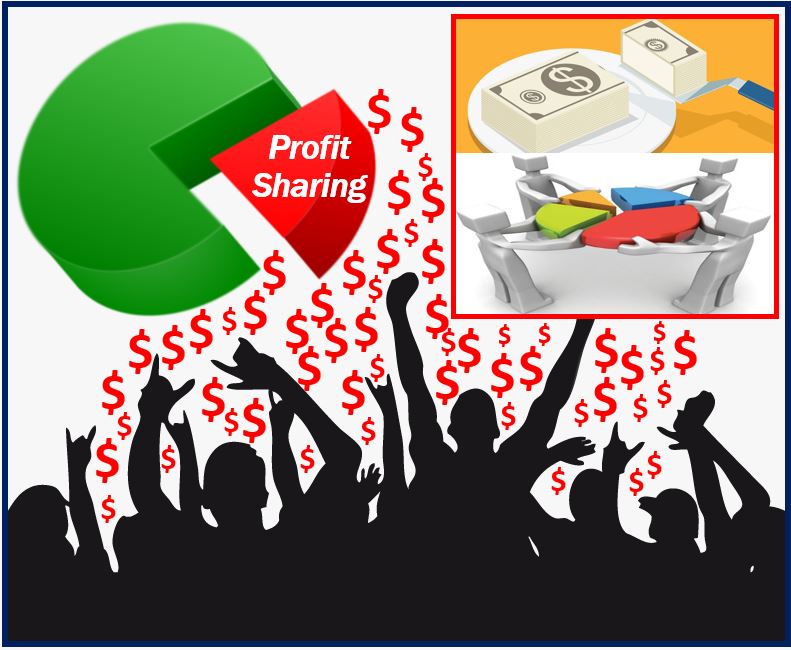Profit Sharing involves giving employees a direct share of a company’s profits. It is an incentive plan that companies pay in addition to their workers’ salaries. The profit share may be in the form of money or stocks. In this context, the word stocks means shares.
There are many different types of profit sharing plans. Some companies share a percentage of their profits with all their employees. Others reward only some people, such as managers, salespeople, or directors, i.e., senior management.
 King University Online says the following regarding the term:
King University Online says the following regarding the term:
“Profit sharing is an incentivized compensation program that awards employees a percentage of the company’s profits. The amount awarded is based on the company’s earnings over a set period of time, usually once a year.”
Profit sharing vs. employee bonuses
Some people mistakenly use the two terms interchangeably. Even though both refer to giving employees extra money on top of their salaries, their meanings are quite different.
Employee bonuses
Companies give certain employees bonuses as a reward for their work or achievements. For example, if the sales department reached its monthly or quarterly target, its members may receive extra money as a reward, i.e., a bonus.
Profit sharing
Profit sharing has nothing to do with an individual employee’s achievement, but rather on how well the company as a whole did that year. In this case, employees only receive the extra money if the company makes a good profit.
It only occurs after the business’ accountants and directors have determined how profitable the past year has been.
Gains sharing is a system that focuses on profits, productivity, and individual workers.
Pros and cons
As is the case with any system or plan, sharing a company’s profits with its employees has both advantages and disadvantages:
Pros
- Employees feel that the company values them.
- Workers appreciate the value of teamwork.
- Each worker has a vested interest in the success of the business.
- Everybody’s goals and objectives are more likely to be similar or the same.
- Employees who know their team effort will be rewarded are likely to work harder.
- Better employee retention, i.e., workers are less likely to leave the company.
Cons

- It is not tied to individual effort or achievement.
- The hardest working or most successful employees may resent others being rewarded equally for less work or lower achievements.
- As it is not tied to individual effort, employees may eventually feel that profit sharing is an entitlement.
- If workers think they are entitled, the whole plan loses its motivational factor.
Effective profit sharing plans require careful structuring to ensure they align with company goals and motivate employees appropriately.
Europe and the USA
Europe
Regarding what happens in Europe, Wikipedia informs:
“The share of profits paid to the management or to the board of directors is sometimes called the tantième. This French term is generally applied in describing the business and finance practices of certain European countries, including Germany, France, Belgium, and Sweden.”
USA
In the US, there are various plans. For example, the company shares a percentage of profits with some or all employees, and contributes the money to their retirement plan. In many cases, they operate alongside 401(k) plans.
In the USA, profit sharing often serves as a supplement to retirement benefits, enhancing employees’ long-term financial security and investment in the company’s future.
Video – What is Profit Sharing?
This video, from our YouTube partner channel – Marketing Business Network, explains what ‘Profit Sharing’ means using simple and easy-to-understand language and examples.
